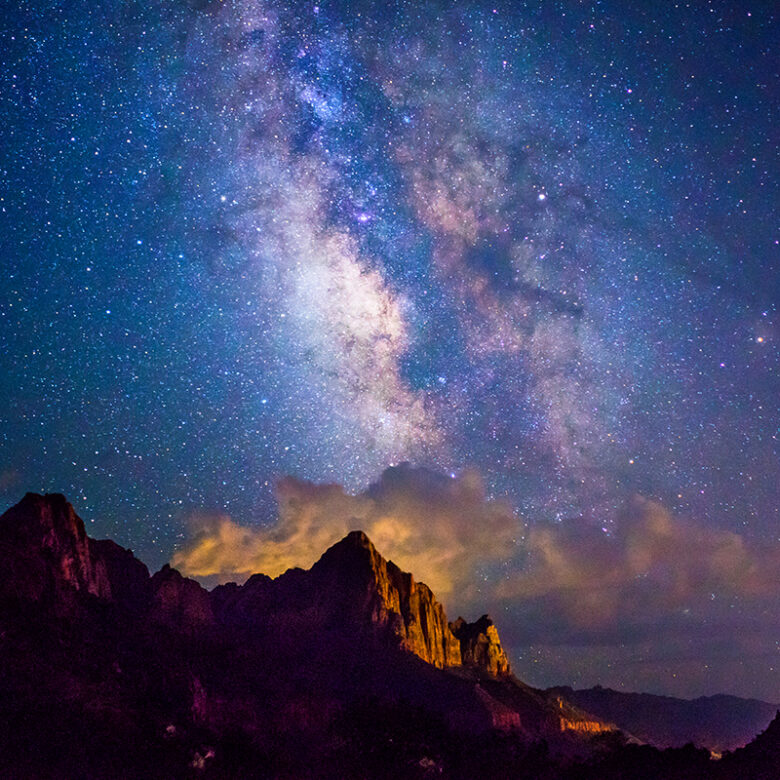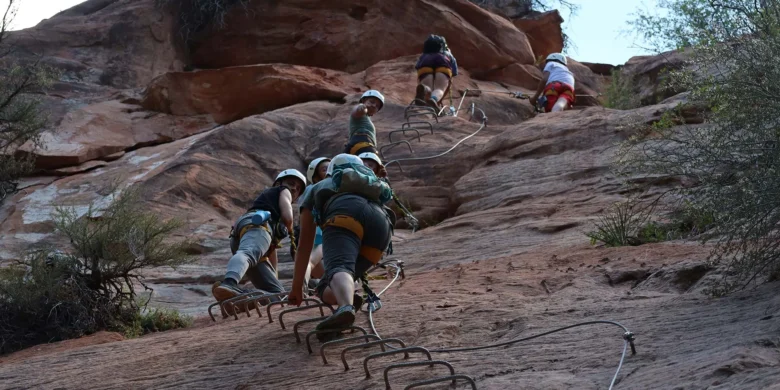Zion National Park is home to a lot of wildlife, all thriving across its mix of desert canyons, rippling rivers and high plateaus. From mule deer grazing along the Virgin River to bighorn sheep navigating sheer cliffs, the park offers a lot of opportunities to see animals in their natural homes.
Watching wildlife in Zion is exciting, but it’s important to do it responsibly. Observing from a safe distance protects both you and the animals, letting you enjoy the experience without disturbing the park’s delicate balance.
This guide is designed to help you plan your wildlife adventures with practical tips. You’ll learn when and where to look for key species, how seasons change what you might see, and how to make your outings both safe and memorable.
By the time you’re done reading, you’ll have a clear picture of Zion’s wild side and feel ready to explore it thoughtfully, with confidence and a little sense of adventure.
Zion’s Iconic Animals at a Glance
In Zion National Park, a variety of wildlife thrives across its deserts, canyons and rivers. Visitors can spot mule deer grazing near water, desert bighorn sheep scaling the cliffs of East Canyon, rock squirrels darting along trails, foxes slipping through quieter areas and bats emerging at dusk. Wild turkeys are also a common sight on the canyon floor, adding seasonal charm to any hike.
Up Close with Zion’s Wildlife
Desert Bighorn Sheep
These iconic climbers are built for steep, rocky terrain. Their sure-footedness allows them to navigate cliffs that look impossible from below. East Canyon, especially near dawn, is a prime place to catch a glimpse as they move along the ridges and rocky outcrops.
Mule Deer
The park’s most commonly seen large mammals often appear along the Pa’rus Trail, Riverside Walk or by streams and rivers. Early morning and late evening are the best times to spot them, as they tend to feed and move in the cooler hours of the day.
Mountain Lions
Mountain lions are the top predators in Zion but are extremely elusive. While sightings are rare, they play an important role in keeping the ecosystem balanced by managing deer populations. Hikers should always stay alert, keep a safe distance from wildlife and follow park safety guidelines.
Smaller Mammals: Foxes, Coyotes, Ringtail Cats and Rock Squirrels
These creatures are usually most active around quiet trails, especially near water or forested areas. Early mornings or late evenings are ideal for spotting foxes or coyotes, while rock squirrels are active throughout the day, often near picnic areas and open trails. Ringtail Cats are a special sighting, they are active mainly at night.
Birds, Reptiles and Amphibians
Birdwatching in Zion
Zion is a paradise for birds of all kinds. California Condors soar above the canyon walls, Peregrine Falcons swoop along cliffs and Canyon Wrens fill the air with their calls. Riverside Walk and Pa’rus Trail are excellent spots for casual birdwatching or photography.
Reptiles and Amphibians
From lizards basking on sunlit rocks to canyon tree frogs near streams, Zion’s smaller wildlife adds color and movement to every hike. A lot of the snakes in Zion National Park are harmless, but it’s important to watch your step and give all animals space to avoid disturbing their natural behavior. There are venomous snakes there, so be very careful.
When and Where: Planning Your Wildlife Adventure
Timing can make a really big difference in spotting wildlife in Zion National Park. Animals tend to be most active during the cooler hours of dawn and dusk. Mule deer and wild turkeys often move along the canyon floor at these times, while desert bighorn sheep can be seen navigating the cliffs of East Canyon around sunrise. Quiet trails near streams and ponds are ideal for catching glimpses of foxes and canyon tree frogs, especially in the early morning or as the sun sets.
Staying close to the park makes these early and late excursions much easier. A base like The Riv lets visitors head out before the crowds and return comfortably after a full day of exploring. This flexibility is especially helpful for those looking to see animals at their most active while keeping the experience relaxed and stress-free.
Planning visits around these peak hours not only increases the chance of sightings but also encourages safer, more responsible wildlife viewing. Giving animals space and observing quietly helps maintain the natural rhythms of the park, so every outing can be both exciting and respectful.
Seasonal Wildlife Calendar
Zion’s wildlife changes with the seasons. So, knowing what to really expect can make each visit more rewarding. In spring, fawns start exploring the canyon floor, migratory birds return and wildflowers attract bees and butterflies. Summer brings bighorn sheep to high elevations and more nocturnal activity, with many animals sheltering from the midday heat.
Fall is full of action as some species engage in mating behaviors, and canyon tree frogs become active after monsoon rains. Winter moves deer to lower elevations, making them easier to spot along trails and near water sources.
Top Spots for Wildlife Viewing
Certain areas of the park are consistently good for spotting animals, especially when paired with the right time of day.
- Zion Canyon Floor: Trails like Pa’rus and Riverside Walk are great for seeing mule deer, wild turkeys and a variety of birds of Zion National Park. Early morning or late evening is ideal.
- East Canyon & Mount Carmel Highway: The cliffs here are home to desert bighorn sheep, often best seen at dawn. Keep a safe distance and maybe use binoculars to observe without disturbing them.
- Quieter Trails Near Water: Small mammals, foxes and amphibians are active near streams and ponds. Moving slowly and keeping noise low increases the chances of sightings.
Visiting these spots responsibly is key. Stay on trails, maintain distance from all wildlife and avoid feeding animals. Not only does this protect the animals, but it also keeps the experience safe and enjoyable for everyone.
Ethical Wildlife Viewing in Zion
Seeing animals in their natural habitat is a privilege, and treating them with care ensures that privilege lasts. Maintaining a safe distance is really important. Binoculars or a zoom lens can bring animals close without disturbing them. Feeding wildlife may seem like no big deal, but it can harm their health and change natural behaviors, so always enjoy animals from afar.
Storing food properly and keeping trails clean helps protect both visitors and wildlife. Many animals are curious, and unsecured snacks can attract them to areas where interactions could be dangerous. Driving cautiously, especially at night, is also critical. Deer, foxes and other creatures often move along roads, and slowing down can prevent accidents while respecting the park’s residents.
Following these simple practices supports conservation efforts for wildlife in Zion National Park. Observing quietly, leaving no trace and respecting animal space helps preserve the park’s delicate ecosystems.
Resources & Planning Tips
For anyone planning a wildlife-focused visit, the official Zion National Park website is a great starting point. It provides up-to-date trail conditions, maps and detailed information about the park’s animals, plants and conservation efforts for wildlife in Zion National Park. Checking it before heading out helps make each outing safer and more rewarding.
Also, staying in the right place can make your trip more enjoyable. The Riv is a convenient home base for wildlife viewing. With easy access to the park and comfortable amenities, it makes early morning departures and evening returns simple and stress-free. This flexibility lets visitors see animals when they are most active while keeping the experience relaxed and enjoyable.
Planning ahead, knowing the best trails and staying close to the park’s action ensures every wildlife adventure in Zion is both exciting and responsible.
Frequently Asked Questions
What is the top predator in Zion Canyon?
Mountain lions are the park’s top predators. They are very elusive and rarely seen, but they play an important role in keeping the ecosystem balanced by managing deer populations.
Are there bears in Zion National Park?
Yes, but bears are not as common in Zion. While black bears may pass through, sightings are rare. Following park safety guidelines and storing food properly helps prevent any unwanted encounters.
Are there mountain lions in Zion National Park?
Yes, mountain lions live in Zion, but they are secretive and mostly active at night. Hikers and visitors should stay alert, keep a safe distance from all wildlife and avoid leaving pets or food unattended.
What are the best times of day to see wildlife?
Early morning and late evening are the most active times for most animals. Mule deer, wild turkeys and foxes are often easier to spot during these cooler hours, while bighorn sheep are best observed near cliffs at dawn.
Conservation efforts and how visitors can help?
Visitors can support conservation efforts for wildlife in Zion National Park by keeping a safe distance from animals, staying on trails, not feeding wildlife and storing food securely. Observing quietly and leaving no trace helps protect the park’s delicate ecosystems for everyone to enjoy.


